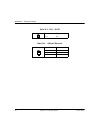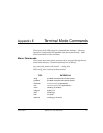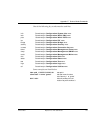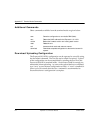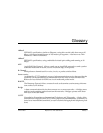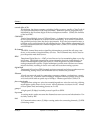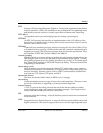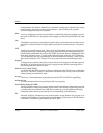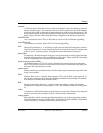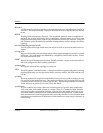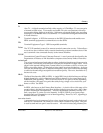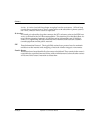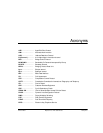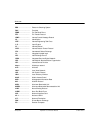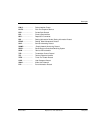
Glossary
Glossary-4 Express 4110/4120 User Manual 61200176L3-1
arrangements and defines a limited set of standard, multipurpose interfaces for equip-
ment vendors, network providers, and customers. Interworking with a public
switched telephone network is retained.
jabber
An error condition in which a network device continually transmits garbage onto the
network. In IEEE 802.3, a data packet whose length exceeds that prescribed in the stan-
dard.
jitter
The slight movement of a transmission signal in time or phase that can introduce errors
and loss of synchronization for high-speed synchronous communications. See phase
jitter.
LATA
Local Access and Transport Area. One of 161 local telephone serving areas in the Unit-
ed States, generally encompassing the largest standard statistical metropolitan areas.
Subdivisions established as a result of the AT&T divestiture that now distinguish local
from long distance service. Circuits with both end-points within the LATA (intraLA-
TA) are generally the sole responsibility of the local telephone company, while circuits
that cross outside the LATA (interLATA) are passed on to an interexchange carrier.
loopback
A diagnostic procedure where data is sent to the device being tested, and the output of
the device is fed directly back to its input, looped around, and the returning data is
checked against that which was sent.
Media Access Control (MAC)
As defined by the IEEE, the lower of the two sublayers of the OSI reference model data
link layer. The MAC sublayer is concerned with media access issues, such as whether
token passing or contention is used.
message
The Layer 3 information that is passed between the CPE and SPCS for signalling.
multipoint line
A communications line having multiple cable access points.
Name Binding Protocol (NBP)
The AppleTalk transport-level protocol that translates a character string name into the
internet address of the corresponding socket client; NBP enables AppleTalk protocols
to understand user-defined zones and device names by providing and maintaining
translation tables that map these names to corresponding socket addresses.
NAT
Network Address Translation occurs at the borders of stub domains. Its purpose is to
translate the IP address of passing packets by changing all references of one IP address
to another. Translation is performed as per RFC 1631.



